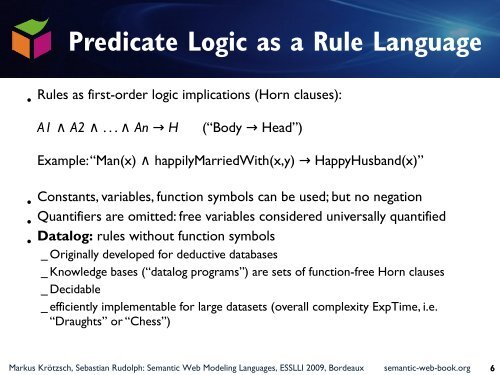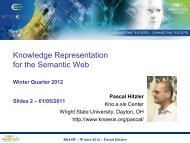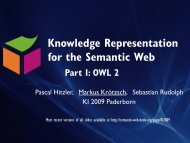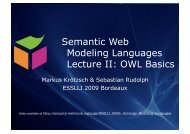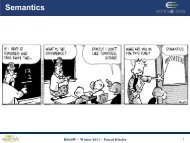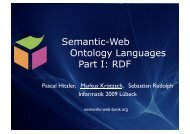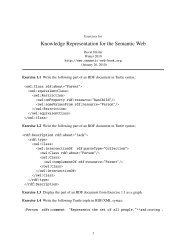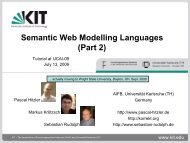Lecture 5 - Foundations of Semantic Web Technologies
Lecture 5 - Foundations of Semantic Web Technologies
Lecture 5 - Foundations of Semantic Web Technologies
You also want an ePaper? Increase the reach of your titles
YUMPU automatically turns print PDFs into web optimized ePapers that Google loves.
Predicate Logic as a Rule Language<br />
•<br />
Rules as first-order logic implications (Horn clauses):<br />
A1 ∧ A2 ∧ . . . ∧ An → H (“Body → Head”)<br />
Example: “Man(x) ∧ happilyMarriedWith(x,y) → HappyHusband(x)”<br />
•<br />
Constants, variables, function symbols can be used; but no negation<br />
•<br />
Quantifiers are omitted: free variables considered universally quantified<br />
•<br />
Datalog: rules without function symbols<br />
–<br />
Originally developed for deductive databases<br />
–<br />
Knowledge bases (“datalog programs”) are sets <strong>of</strong> function-free Horn clauses<br />
– Decidable<br />
–<br />
efficiently implementable for large datasets (overall complexity ExpTime, i.e.<br />
“Draughts” or “Chess”)<br />
Markus Krötzsch, Sebastian Rudolph: <strong>Semantic</strong> <strong>Web</strong> Modeling Languages, ESSLLI 2009, Bordeaux<br />
semantic-web-book.org<br />
6


